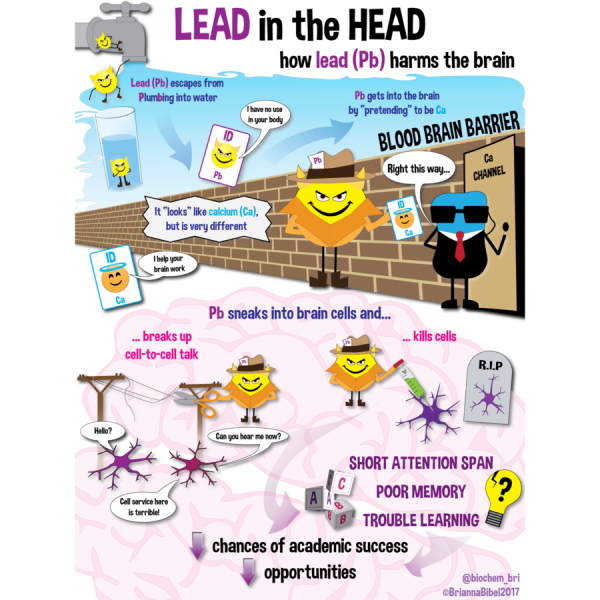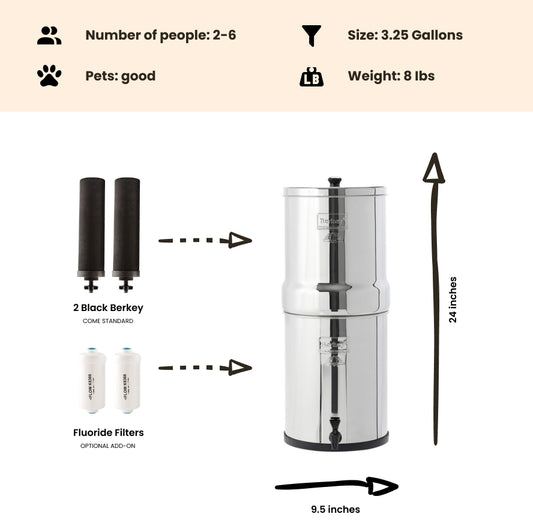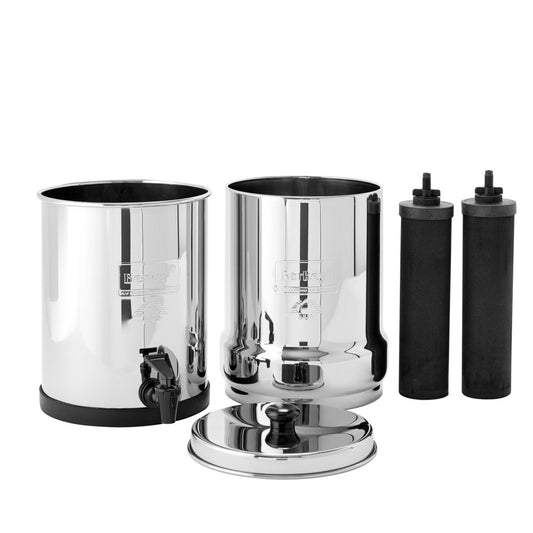
How Bad is Lead, and How do I Know if my Drinking Water is Contaminated?
By Dan DeBaunShare
Lead is one of the most common drinking water contaminants. It is also one of the most harmful. Lead is a toxic heavy metal that can get into drinking water from the environment, for example by leaching through contaminated soil into underground aquifers, rivers and other water bodies that serve as a drinking water supply, or by leaching from lead water pipes and fittings used to distribute the water to our homes.
Lead is toxic to everyone, even at low levels, but pregnant women, infants and young children are particularly vulnerable. Yet, according to Healthy Babies Bright Futures, one out of every six households' drinking water contains more lead than what is deemed safe to feed bottle-fed babies with, and it was found in the drinking water of 80% of homes tested.
Side Note: All Berkey filter systems equipped with the black berkey filters will remove lead from your drinking water 99.9%+ .
Adverse Symptoms After Exposure to Lead
Ingesting high doses of lead can result in lead poisoning, with symptoms such as stomach cramps, nausea and vomiting, fatigue and weight loss. Although lead poisoning is relatively uncommon in the US, the long-term health risks from exposure to lower doses, where damage is less visible and therefore goes undetected, is unfortunately far more common. Health effects associated with long-term exposure to lead include damage to the developing brain, which makes it particularly harmful for developing fetuses and young children, who may suffer lifelong health impacts, including lower intelligence as well as learning and behavioral problems.
How Do I Know if My Drinking Water Contains Lead?
Unlike sediment or foul tasting chemicals, lead is not readily detected in drinking water as it does not discolor water or give it an unpleasant taste or odor. The only way to find out whether your water contains lead is to have it tested.
Healthy Babies Bright Futures are currently offering a limited supply of affordable water testing kits at a reduced price to enable families to test their drinking water for lead. The test kits, which normally sell for $65 (including postage and water testing at Virginia Tech's Environmental Engineering laboratory) can be purchased online for as little as $12 via their website for a limited time only. Purchasers are urged to pay what they can afford, and to consider making a donation to sponsor a test kit so that they can continue to subsidize the test kits for less fortunate families for an extended period.
What Should you do if your Drinking Water Contains Lead
If your water supply contains lead you can take measures to reduce it. One simple method often that is touted to help reduce lead in drinking water is to run the tap for 30 seconds or more in order to flush out the water standing in the pipes that may contain leached lead. However, a recent study has shown that unless you run the tap for 6 minutes, which equates to wasting a LOT of precious water, this is unlikely to be very effective at reducing your exposure to lead. The only effective way to remove lead is to use a drinking water filter that is certified capable of removing lead.
-
Regular price $234.00 USDRegular priceUnit price / per
-
Regular price $327.00 USDRegular priceUnit price / per
-
Regular price From $367.00 USDRegular priceUnit price / per
-
Regular price From $408.00 USDRegular priceUnit price / per
-
Regular price From $451.00 USDRegular priceUnit price / per
-
Regular price From $478.00 USDRegular priceUnit price / per
-
Regular price $332.50 USDRegular priceUnit price / per
$350.00 USDSale price $332.50 USDSale

Dan DeBaun
Dan DeBaun is the owner and operator of Big Berkey Water Filters. Prior to Berkey, Dan was an asset manager for a major telecommunications company. He graduated from Rutgers with an undergraduate degree in industrial engineering, followed by an MBA in finance from Rutgers as well. Dan enjoys biohacking, exercising, meditation, beach life, and spending time with family and friends.
~ The Owner of Big Berkey Water Filters

















